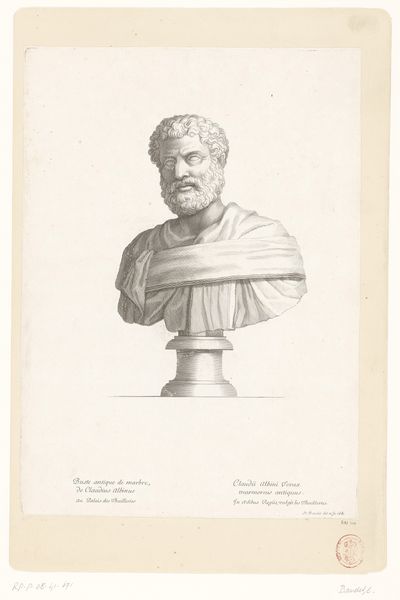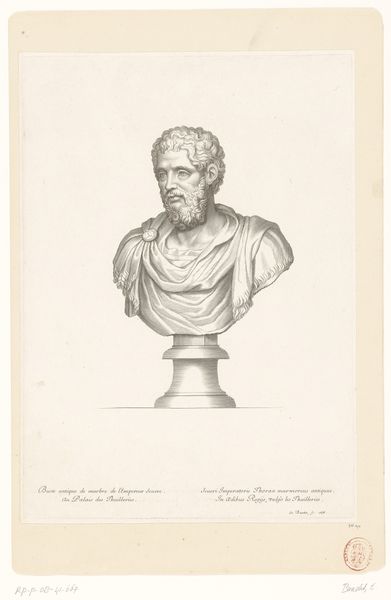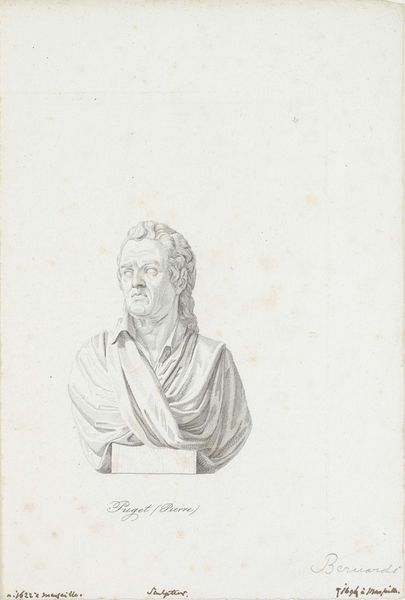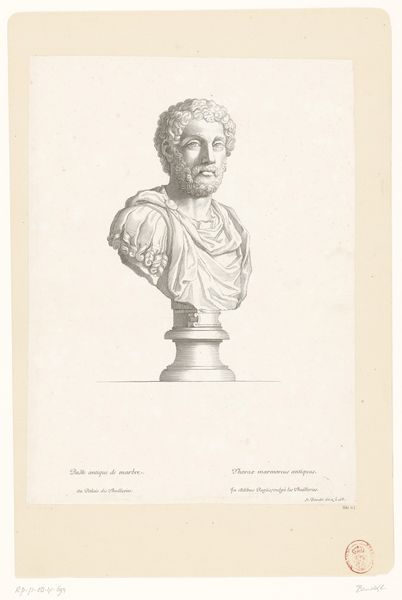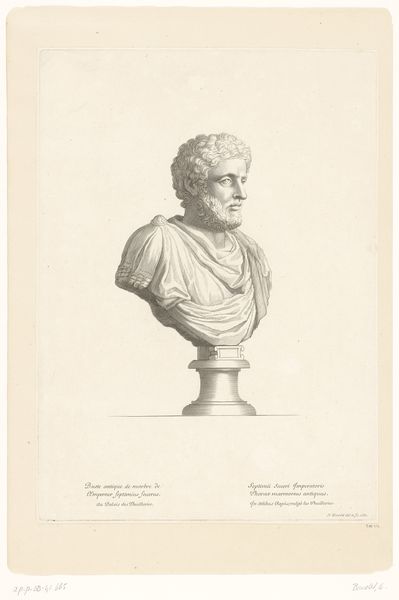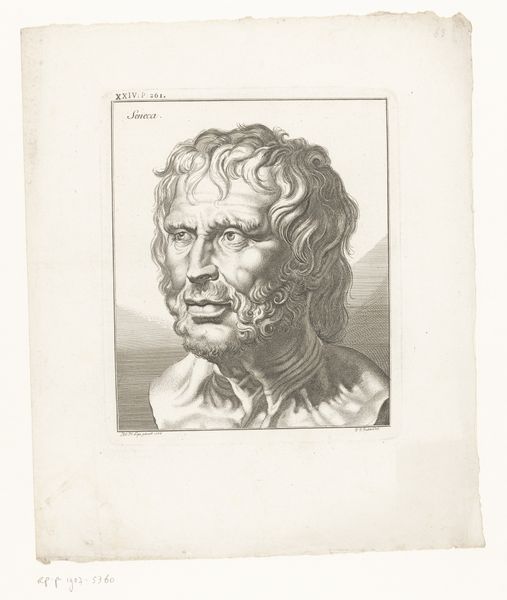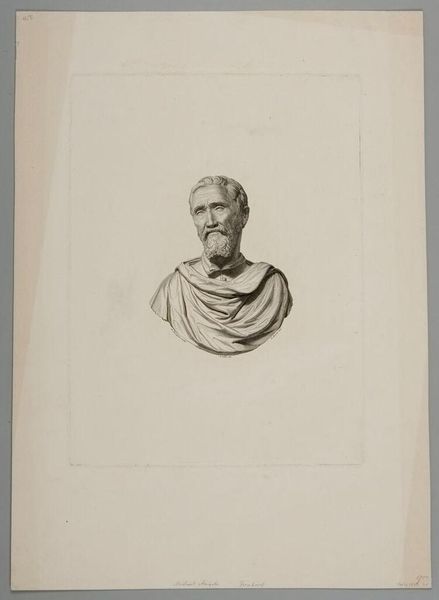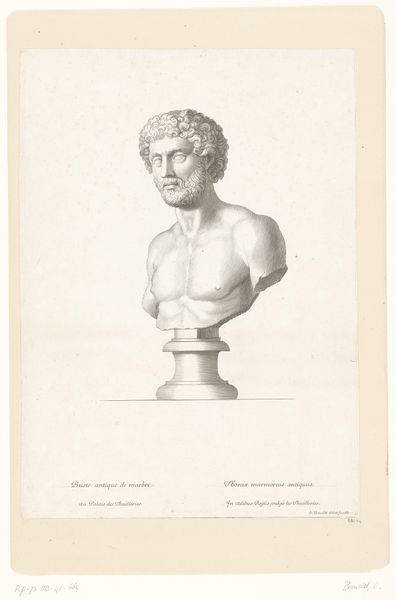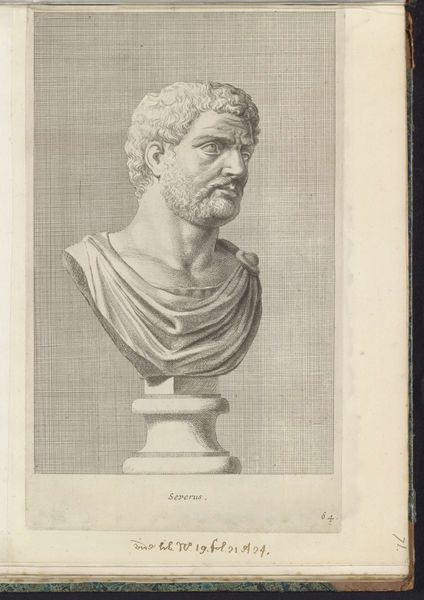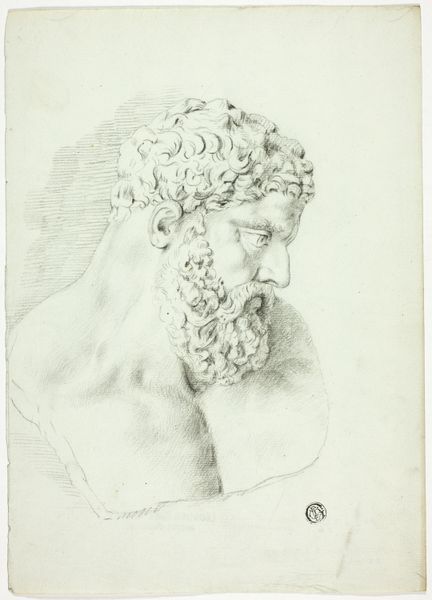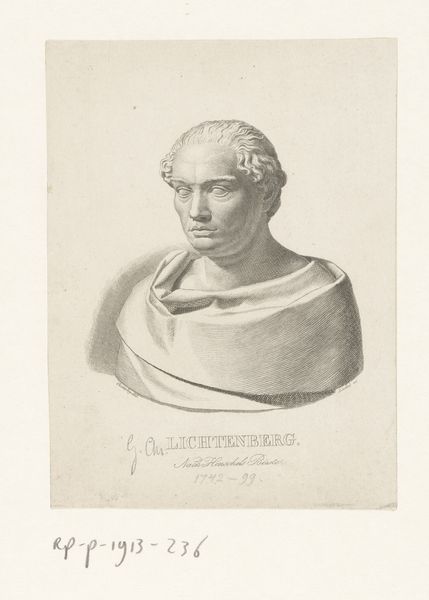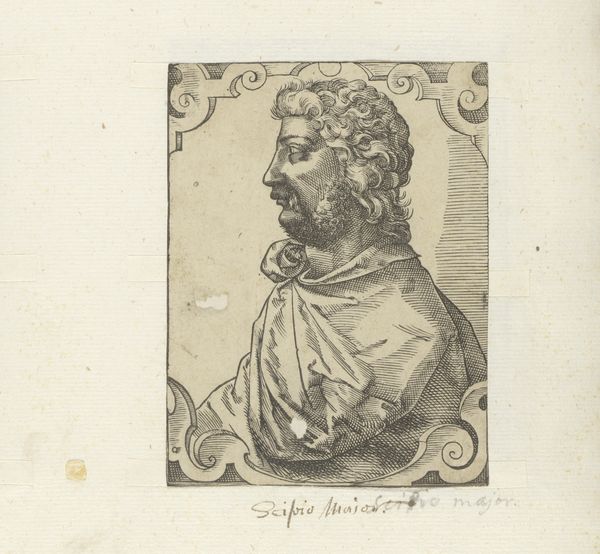
drawing, pencil
#
portrait
#
pencil drawn
#
drawing
#
neoclacissism
#
aged paper
#
light pencil work
#
pencil sketch
#
light coloured
#
old engraving style
#
white palette
#
form
#
personal sketchbook
#
journal
#
classicism
#
pencil
#
line
#
pencil work
Dimensions: height 201 mm, width 120 mm
Copyright: Rijks Museum: Open Domain
Curator: Welcome. Before us we have "Mannenkop naar Grieks voorbeeld" or "Head of a Man after a Greek Example" by Johannes de Mare, created in 1824. It's a pencil drawing, seemingly on aged paper. What strikes you first about this work? Editor: The immediate impression is one of serenity. Despite the inherent stillness of the subject—a stone bust, no less—there’s an incredible sense of peace emanating from this work, and the delicate linework contributes to its ethereal quality. Curator: Indeed. Note the artist’s careful rendering of form through line and shading. The hatching technique, particularly evident in the beard and hair, creates volume and texture with remarkable efficiency. Observe how de Mare has deployed classical principles of proportion and anatomical accuracy. Editor: Absolutely. It seems de Mare uses this figure to invoke an almost timeless feeling. The man depicted is an archetypal image, one which harkens back to Greek ideals of masculinity and wisdom. I'm reminded of philosophers, thinkers whose visages became synonymous with stoicism. Curator: Precisely! The choice to emulate a Greek sculpture is deliberate. Neoclassicism in this period sought to revive the perceived purity and order of ancient art, rejecting the drama of the Baroque and Rococo. This image represents the elevation of reason, order, and restraint. The light-colored palette enhances this classical impression. Editor: I find myself focusing on the eyes. They are so human, conveying intelligence. Considering it's rendered simply in pencil, the expressiveness achieved is profound. I wonder about the personal connection the artist may have felt towards these classical ideals. Curator: It serves as a testament to the power of line as a tool for both accurate representation and emotional expression. Editor: It invites reflection. It seems to quietly implore a return to what we may remember as the cornerstones of culture. A stoic reflection on humankind’s higher capacities. Curator: Indeed, a convergence of technique and intellectual ideals, beautifully synthesized on paper. Editor: A visual echo, perhaps, from an era the artist deeply revered.
Comments
No comments
Be the first to comment and join the conversation on the ultimate creative platform.

